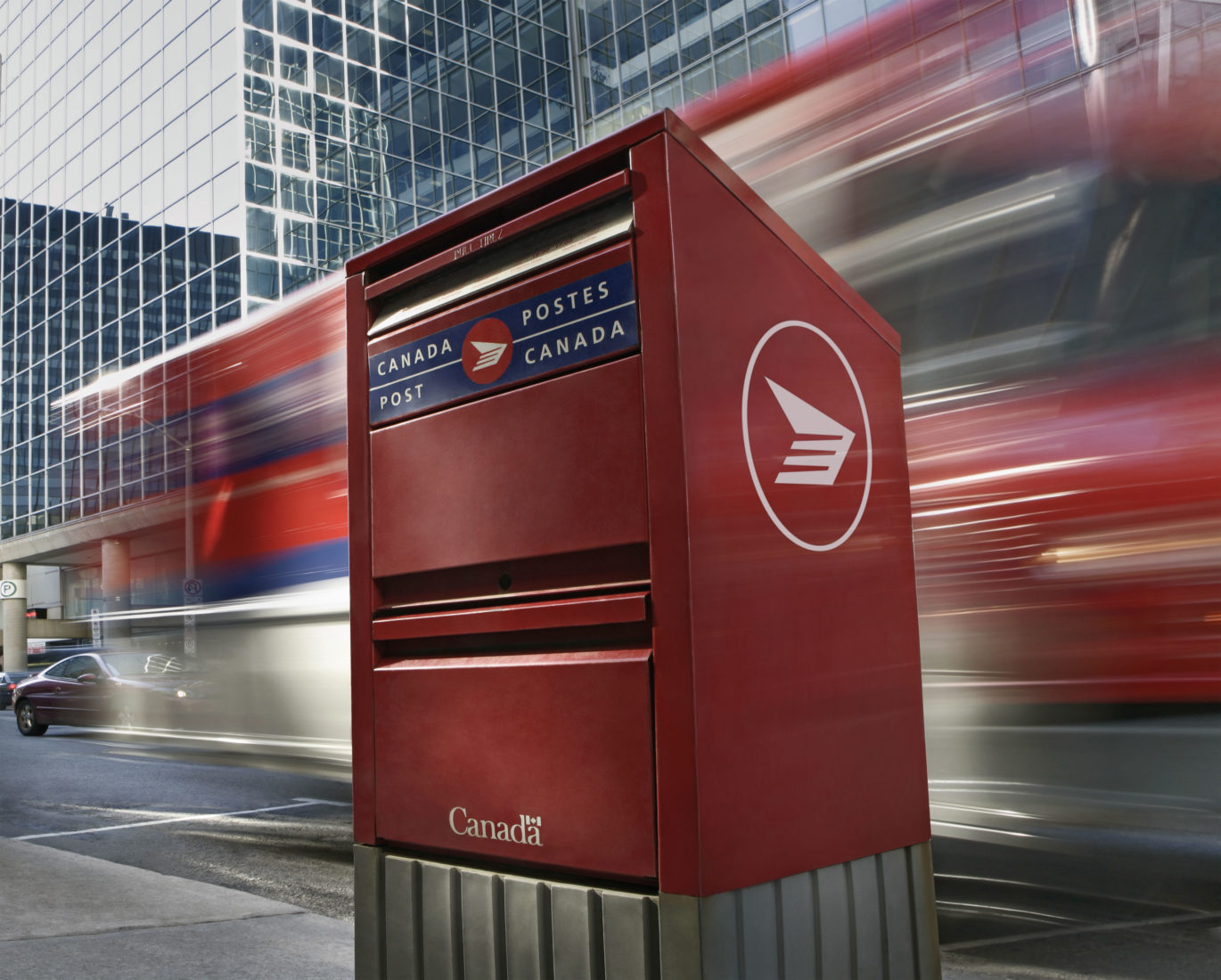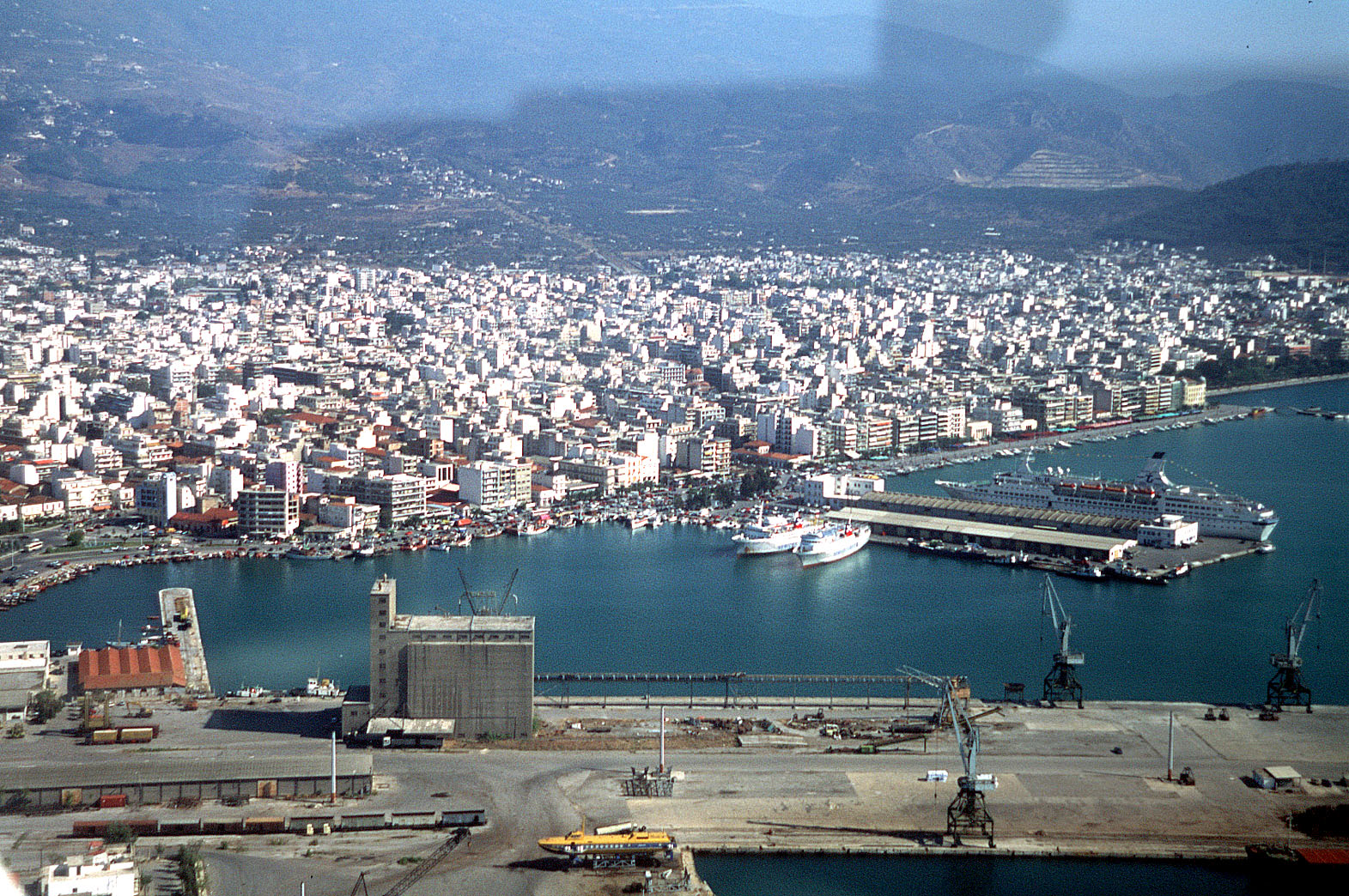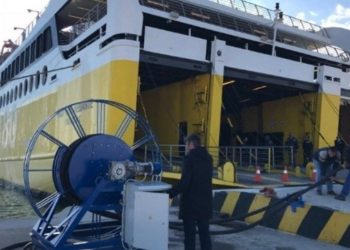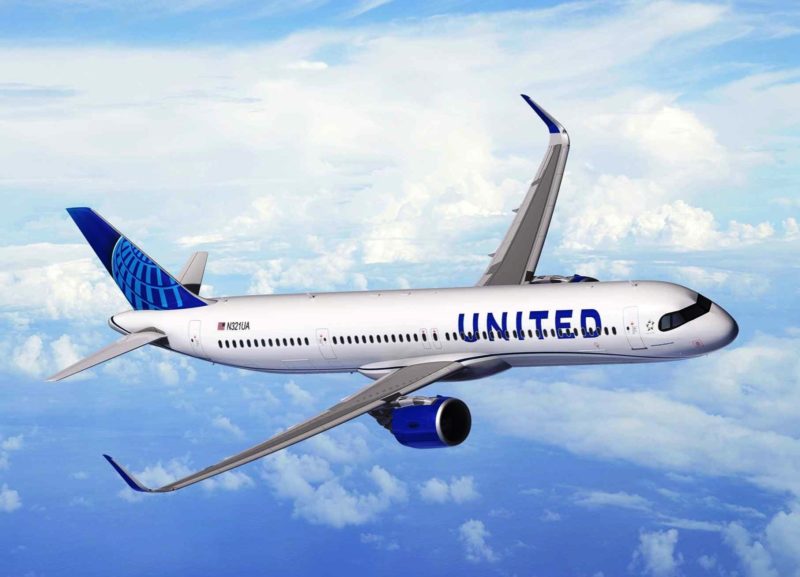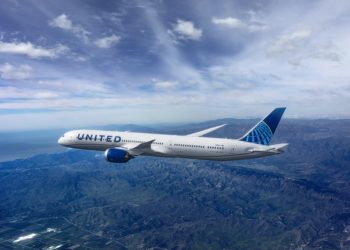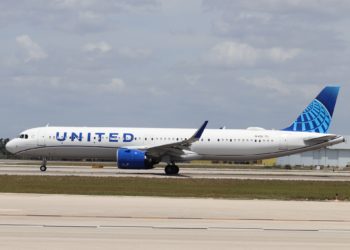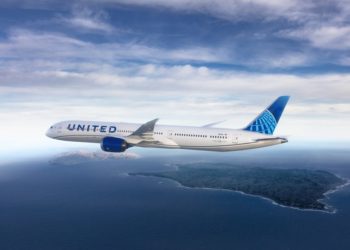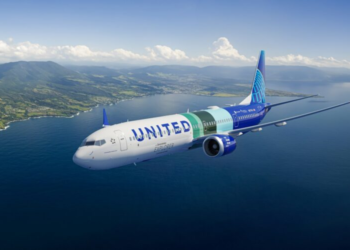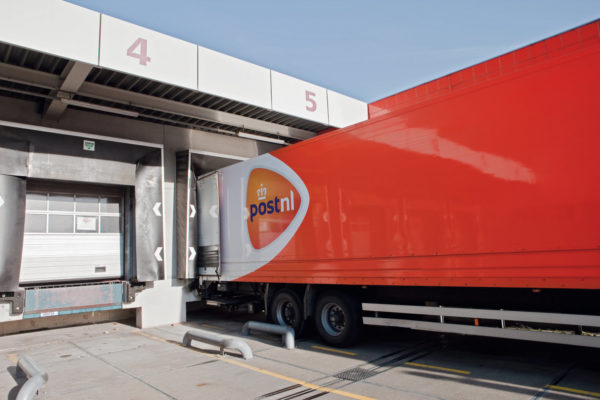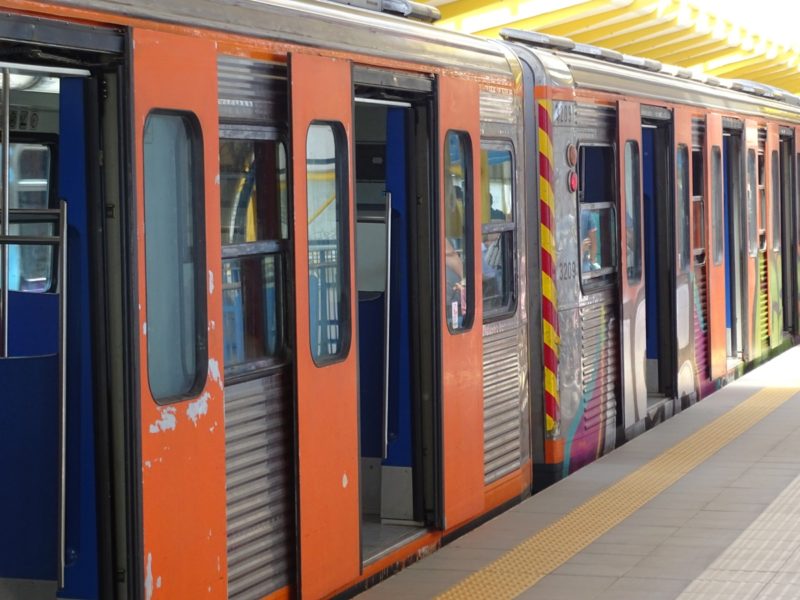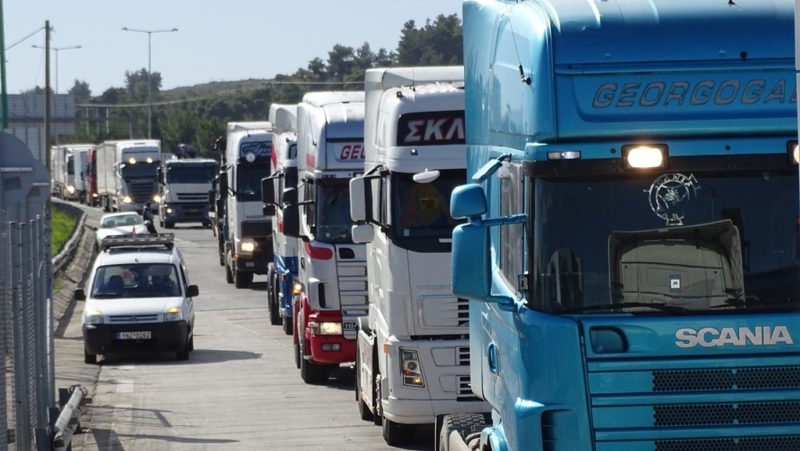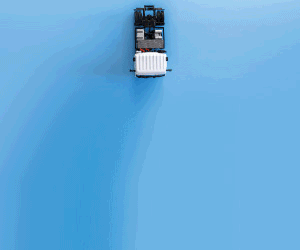Chicago-based United Airlines on Wednesday launched a test flight of a commercial aircraft on 100 percent sustainable aviation fuel in Houston.
A Boeing 737 Max 8 aircraft circled George Bush Intercontinental Airport for an hour and a half, flying on one engine of the sustainable fuel and a second engine filled with traditional jet fuel to compare the performance and demonstrate that there were no operational issues with the alternative fuel.
The 737 aircraft, which seats up to 150, had only two United Airlines pilots on board for the test flight, director of flight testing Ryan Smith and chief test pilot Ty Loutzemheiser.
The test flight went smoothly, said Smith, who has 37 years of experience as a pilot.
“It went great,” Smith said. “The SAF operated in the airplane exactly as we expected, matching the performance of the jet fuel going into the left engine.”
United will be the first commercial airline to operate a 100 percent drop-in SAF flight, in partnership with Chicago-based Boeing, Virent of Madison, Wis., and Marathon Petroleum of Findlay, Ohio, CFM/GE Aviation of Cincinnati and World Energy of Boston, the carrier said.
Drop-in SAF meets current petroleum-based jet fuel requirements and can be substituted for jet fuel without any modifications to engines and airframes.
The 737 Max 8 is the same aircraft that will be used when the first passenger flight using SAF takes flight, likely by year-end, from Chicago O’Hare International Airport to Ronald Reagan Washington National Airport in Washington, D.C.
Smith said passengers will experience no difference with the change to SAF, made with plant-based feedstocks, including sugars from beets, sugarcane and corn.
“From the flight deck, we didn’t notice anything in terms of any different vibrations,” Smith said. “There was no smoke or smell. It felt just like being on a regular 737.”
The move to SAF is part of United’s goal to reduce its greenhouse gas emissions by 100 percent by 2050, without relying on traditional carbon offsets. It also meets increased customer demand and government requirements for cleaner energy to reduce global warming.
In the U.S., President Joe Biden in April pledged to reduce greenhouse gas emissions by at least 50 percent by 2030, in a push by the administration to aggressively combat climate change.
The airline industry was decimated by the pandemic. International travel isn’t expected to rebound quickly because of lower vaccination rates in many parts of the globe and the resurgence of the coronavirus through the delta variant.
Globally, jet fuel demand is expected to reach 5.8 million barrels per day in 2021, about 30 percent more than during 2020, the EIA said. Before the pandemic, some 7.5 million barrels of jet fuel were consumed daily around the world.
But domestic U.S. travel for United has nearly reached pre-pandemic levels. The carrier said it will operate 3,500 daily flights in December, the most since the start of the pandemic. This figure represents 91 percent of the carrier’s capacity compared with December 2019, according to United.
The new 737 Max 8, which joined the carrier’s domestic fleet on July 16, is the first of 270 jets scheduled to be delivered to United by 2025.
Moreover, the carrier in July said it will buy 100 ES-19 aircraft from the Sweden-based electric aircraft startup Heart Aerospace. The ES-19, a 19-seat electric airplane that could hit the market as early as 2026, has the potential to fly up to 250 miles. By using electric motors instead of jet engines, and batteries instead of jet fuel, Heart’s ES-19 aircraft will have zero operational emissions.
(Houston Chronicle)


